Sea Glass and Beach Glass: A Collector’s Guide
- Martha Edwards
- Jun 13
- 5 min read
There’s something endlessly calming about walking along the shoreline, listening to the waves and scanning the sand for a flash of colour. As someone who collects sea glass myself here in Cornwall, I love not only the hunt, but the history each fragment carries. Whether you call it sea glass, beach glass, or even drift glass, these weathered glass pieces are miniature treasures shaped by time, ocean waves, and sometimes even shipwrecks.
In this post, I’ll take you through everything I’ve learned over the years: from how sea glass forms, to the best sea glass beaches, colour rarity, and how to tell genuine sea glass from artificial sea glass.
If you’ve ever picked up a rounded glass pebble and wondered where it came from—you’re in the right place.

What Is Sea Glass and How Does It Form?
Sea glass begins life as broken glass—often from glass bottles, jars, or even household items—that ends up in the sea. Over years or decades, the movement of salt water, sand, and other elements gives it a distinctive frosted appearance and rounded edges.
Here’s how the process works:
Broken glass bottles, jars, or glass objects are discarded or lost into the ocean—sometimes from even shipwrecks.
The tumbling action of waves and sand removes the sharp edges.
Over time, the surface turns matte and smooth: this is real sea glass.
It usually takes at least 20 to 100 years for a piece of sea glass to fully weather, though the timeline varies depending on the original glass, the ocean floor environment, and the type of glass items.
Sea Glass vs Beach Glass: Is There a Difference?
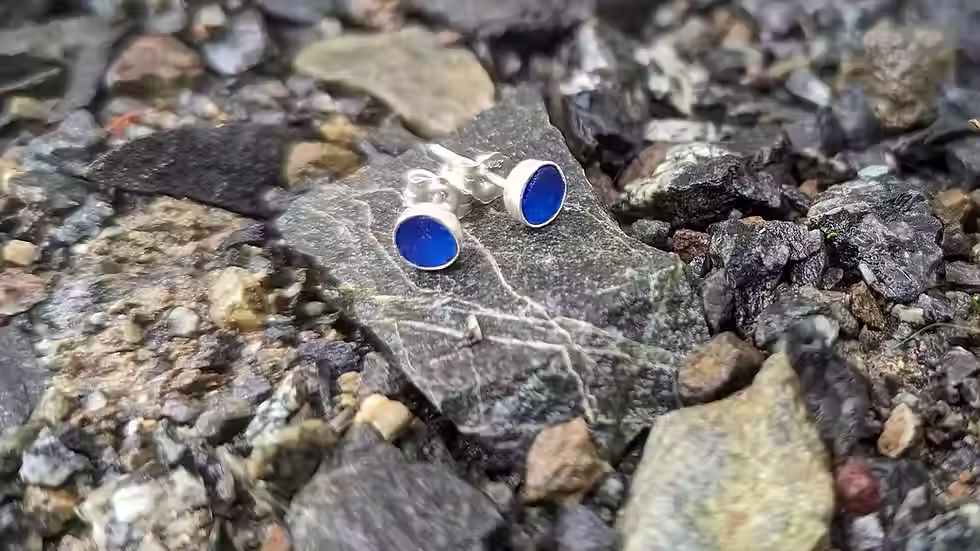
These two terms are often used interchangeably, but there are subtle differences:
Sea glass usually refers to glass fragments smoothed by the salt water of the ocean.
Beach glass may come from freshwater beaches, such as around the Great Lakes or large rivers.
Because salt water tends to create a smoother, more frosted finish, many collectors favour natural sea glass over beach glass for its velvety texture.
Common and Rare Colours of Sea Glass
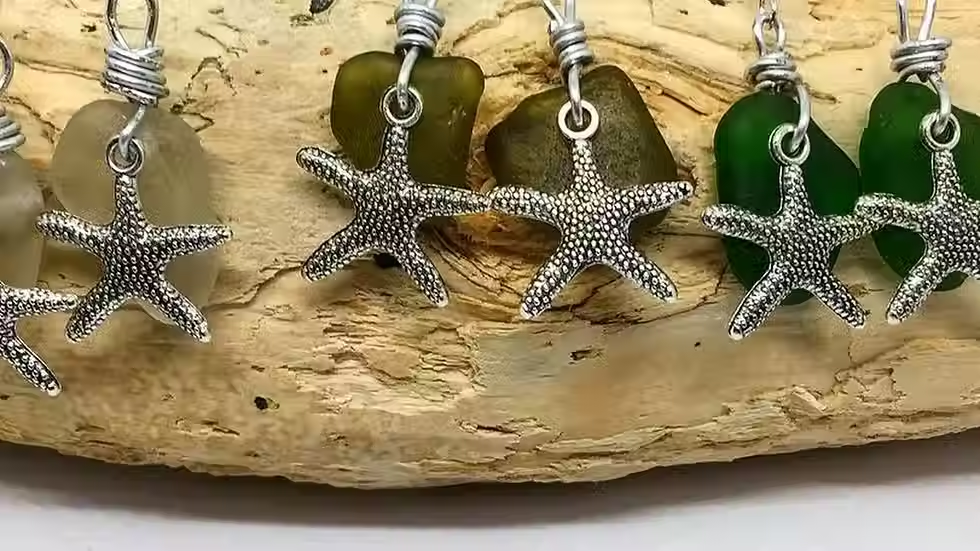
The colour of sea glass often hints at its origin. Below are some of the most common colors and some rarer finds:
Common Colours:
Most sea glass found on UK beaches is green, clear or brown.
Green (including lime green) – from beer, wine, and soda bottles.
Clear glass – from old jars, clear plates, and soda bottles.
Brown – also from beer bottles, old medicine bottles, and some food containers.
Less Common but Still Found:
Cobalt blue – often from vintage medicine bottles, art glass, or perfume bottles.
Sea foam and aqua – from antique soda bottles and milk glass items.
Rare Colors:
Orange, red, purple, turquoise, and multi-coloured pieces.
Orange is one of the rarest, possibly from car tail lights, art glass, or decorative glass objects.
Multi-colour “end-of-day” glass (like those found at Seaham) may contain swirls and bubbles from dumped artificial glass or art glass remnants.
Some of the most highly sought pieces come from poison bottles, boat lights, bottle necks and unique broken tableware. These rare items are often a collector’s dream.
The Best Sea Glass Beaches in the UK and Beyond

I’ve done most of my sea glass collecting in Cornwall, but many other coastlines are known for yielding beautiful pieces. If you're planning a trip or looking to explore, here are some best sea glass beaches:
Top UK Sea Glass Beaches:
Seaham Beach, Durham: Famous for its multi-coloured glass fragments from a former Victorian glass factory.
Porthleven, Cornwall: Great after storms; I’ve found lovely blues and aquas here.
Marazion and Mount’s Bay, Cornwall: Smooth glass pieces in soft greens and whites.
Sidmouth, Devon and Lyme Regis, Dorset: Known more for fossils, but you can spot drift glass too.
Looking for the best spots to go beachcombing? You can read more about some of the best sea glass beaches in the UK in our dedicated blog post, including hidden gems and tips for when to visit.
Famous International Sea Glass Beaches:

Glass Beach, Fort Bragg (California) – formed from an old dump site; the beach itself is made of glass!
Davenport, California – known for vibrant art glass shards.
Puerto Rico, Japan, and parts of the Northeast United States are also rich in weathered glass found along the coast.
Always check local regulations – some of these beaches (like Fort Bragg) no longer allow collection.
Is It Legal to Take Sea Glass from the Beach?

While collecting a piece of sea glass here and there is usually fine in the UK, it's worth being aware of the following:
UK beaches: Generally OK to collect small amounts for personal use, especially outside protected zones.
Protected areas (such as SSSIs or heritage coastlines): Avoid removing glass items or any natural material.
USA and elsewhere: Check local, state, or national park rules.
When collecting:
Don’t disturb wildlife or dunes.
Leave some sea gems behind for others to enjoy.
Avoid taking large quantities or selling sea glass collected in restricted areas.
Real vs Artificial Sea Glass
With the rise in demand for sea glass jewellery, there’s also been an increase in artificial sea glass or tumbled glass made with a rock tumbler.
How to spot genuine sea glass:
Frosted appearance with shiny spots only if lightly worn.
No remaining sharp edges.
Varied shape and surface texture.
Signs of artificial sea glass:
Uniform shape, often too round.
Smooth but lacks texture.
Sometimes coloured glass that's been quickly tumbled.
No pitting or natural imperfections.
While artificial sea glass can be pretty, it doesn’t carry the same history or appeal as real sea glass.
How to Clean and Store Your Finds
Once you’ve picked up a piece of sea glass, you may want to clean and keep it safe.
Cleaning tips:
Rinse in warm water with a soft brush.
Avoid harsh chemicals—they can damage the surface of weathered glass.
Storage ideas:
Sort by colour or origin in jars.
Use shadow boxes or trays to display your favourites.
If crafting or making jewellery, sort by thickness and drillability.
Why Sea Glass Appeals to So Many People
There’s something almost meditative about collecting glass by the sea—each piece has a story. It may have once been part of a beer bottle, a medicine bottle, or a child’s broken glass toy.
To me, each piece of sea glass represents a small act of transformation: from discarded waste to something quietly beautiful. Whether you collect it for crafting, decorating, or the sheer joy of finding it, sea glass has a magic all its own.
And yes, it can become a bit of an obsession—I once leaned forward to pick up a particularly lovely blue piece glinting near a rock pool, only to hear a splash as my phone slipped from my pocket and sank straight in. The sea gave me a beautiful find and took a mobile phone in return! (It was completely wrecked, by the way.)
But that’s part of the charm too—sea glass collecting isn’t just about the object, but the experience of being by the coast, eyes scanning the sand, never knowing what you’ll find next.
Our Handmade Sea Glass Jewellery
If you love the idea of keeping a piece of the sea with you, take a look at our sea glass jewellery range. Each item is handmade using genuine sea glass found on Cornish beaches and set in recycled silver. We don’t use artificial sea glass—just real, naturally weathered glass collected by hand.
You'll find:
Necklaces, earrings and anklets
A range of sea glass colours
Handmade pieces with a coastal story behind each one
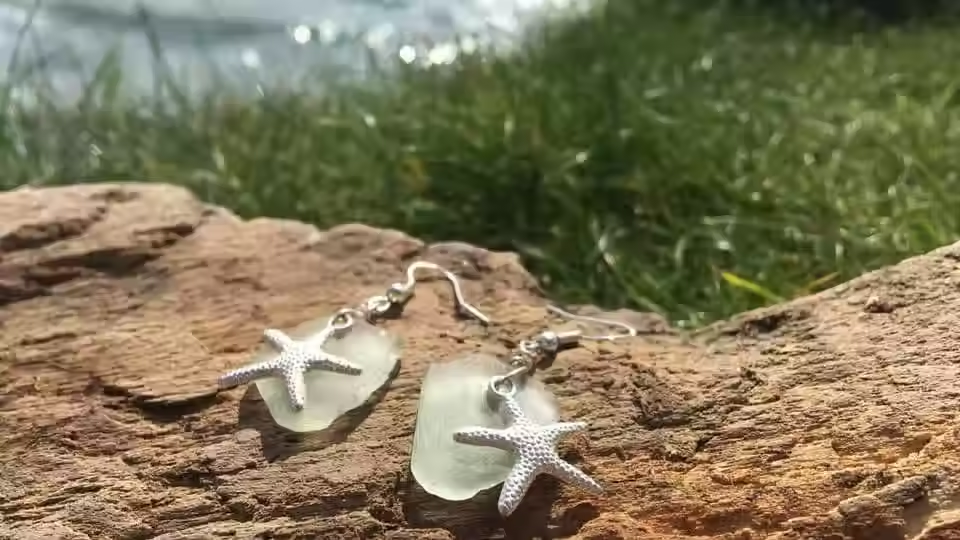
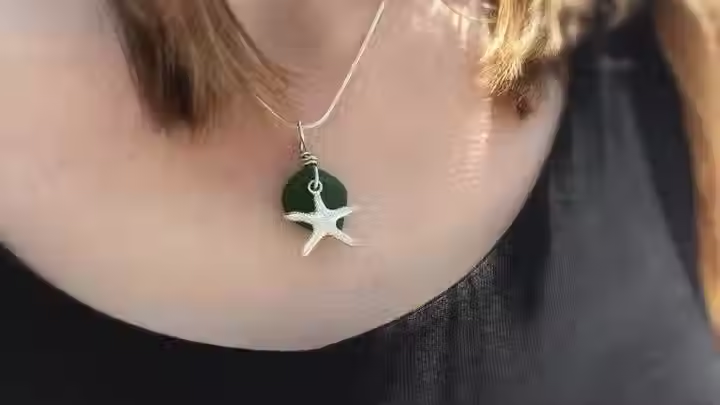
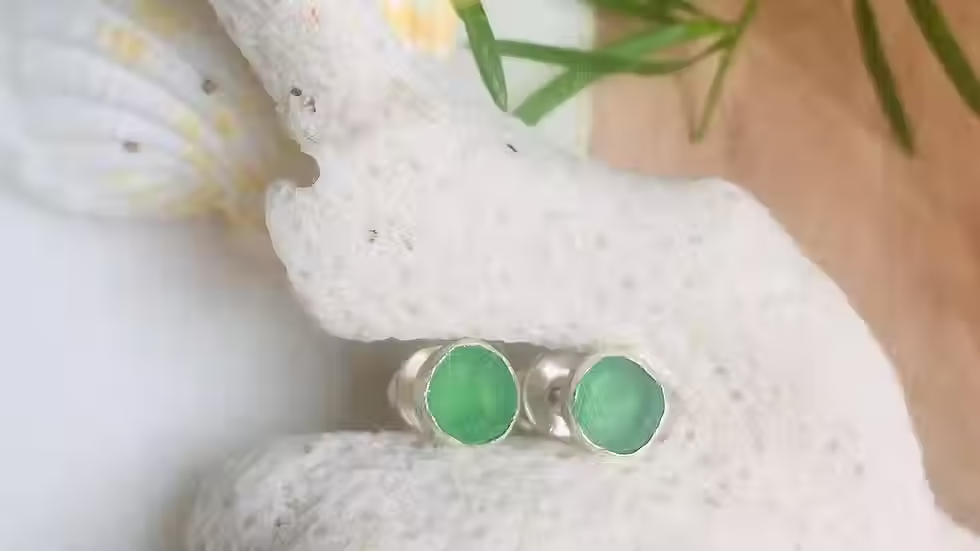

Comments